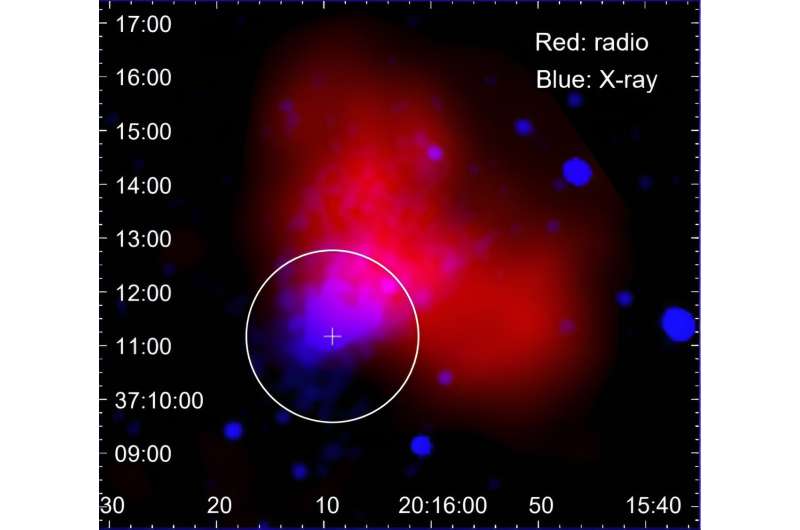February 9, 2024 report
This article has been reviewed according to Science X's editorial process and policies. Editors have highlighted the following attributes while ensuring the content's credibility:
fact-checked
preprint
trusted source
proofread
Chinese astronomers find radio pulsar in a supernova remnant

Using the Five-hundred-meter Aperture Spherical radio Telescope (FAST), astronomers from the Nanjing University in China and elsewhere, have detected a radio pulsar in a supernova remnant known as CTB 87. The finding is reported in a paper published February 1 on the arXiv pre-print server.
Pulsars are highly magnetized, rotating neutron stars emitting a beam of electromagnetic radiation. They are usually detected in the form of short bursts of radio emission; however, some of them are also observed via optical, X-ray and gamma-ray telescopes.
CTB 87 is a plerionic supernova remnant (SNR) with an X-ray luminosity nearly 100-times weaker than the Crab Nebula in the 0.15−3 keV band. It hosts a pulsar wind nebula (PWN) with trailing morphology in X-rays. However, although PWNe are nebulae powered by the wind of a pulsar, no such object in this SNR has been found to date.
Recently, a team of astronomers led by Nanjing University's Qian-Cheng Liu investigated a point-like X-ray source in CTB 87, designated CXOU J201609.2+371110. They report that using FAST radio pulses have been discovered from this source.
"We report on our discovery of the radio pulsar, PSR J2016+3711, in supernova remnant CTB 87, with a ∼ 10.8???? significance of pulses, which confirms the compact nature of the X-ray point source in CTB 87," the researchers wrote.
According to the paper, PSR J2016+3711, located at a distance of about 43,400 light years, has a spin period of 50.8 milliseconds and a dispersion measure of approximately 428 pc/cm3. The pulsar's spin down luminosity was measured to be 22 undecillion erg/s, while its characteristic age is estimated to be 11,100 years. PSR J2016+3711 therefore is the first pulsar in SNR detected with FAST.
The strength of the equatorial surface dipole magnetic field of PSR J2016+3711 was found to be at a level of 1.9 TG. The study also found that the radio pulse profile of this pulsar is narrow, without broad wings, which suggests that the radio beam starting near the magnetic polar cap is intrinsically narrow, or the line of sight sweeps just across a small segment of a broad beam.
Given that many pulsars also emit gamma-rays, Liu's team has also analyzed the data from NASA's Fermi spacecraft to search for the possible gamma-ray pulsation from PSR J2016+3711. However, they found no gamma-ray pulsation from this source. The researchers added that more observations are needed in order to definitively exclude PSR J2016+3711 as a gamma-ray emitter.
"More follow-up radio observations spanning over years would be helpful to obtain a more accurate timing solution, which could then be used to fold the gamma-ray data and search for the pulsation," the authors of the study concluded.
More information: Qian-Cheng Liu et al, Discovery and timing of pulsar J2016+3711 in supernova remnant CTB 87 with FAST, arXiv (2024). DOI: 10.48550/arxiv.2402.00578
Journal information: arXiv
© 2024 Science X Network




















